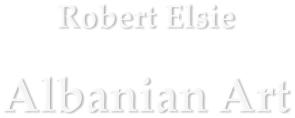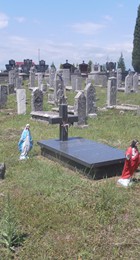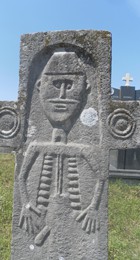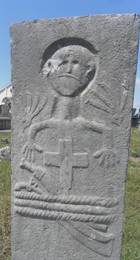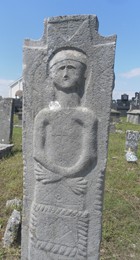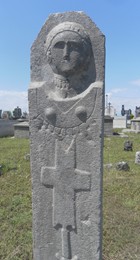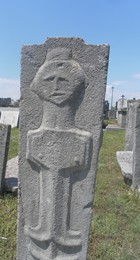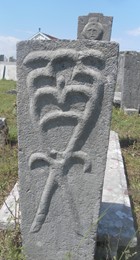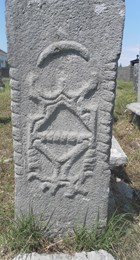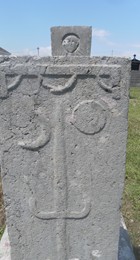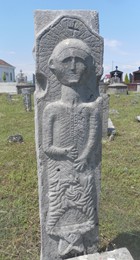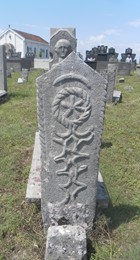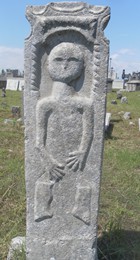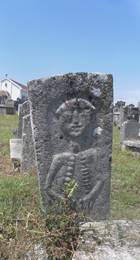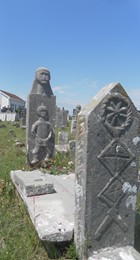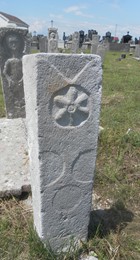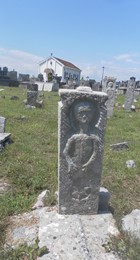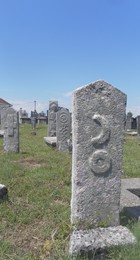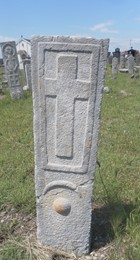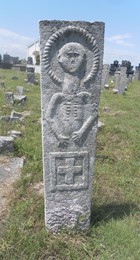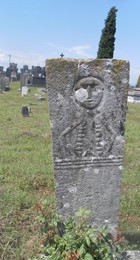
| Robert Elsie | AL Art | AL History | AL Language | AL Literature | AL Photography | Contact |

Albanian Grave Art
Deutsch | Shqip The Albanians do not have a developed grave culture. The fine old cemeteries that are to be found in other European countries are rare in this part of the world. Indeed, there are very few original graves in Albania that predate the Second World War. One reason for this, aside from the high level of destruction and self-destruction that has ravaged Albanian lands over the ages, is that the majority of Albanians converted to Islam during the Ottoman period. Although this conversion was more formal than fervent, and religious sentiment – Muslim or Christian – has never been strong in the country, Muslim Albanians have until recently, for the most part, respected Islamic burial traditions. This means that the dead are buried very quickly, if possible within 24 hours, and that little more than a mound of earth remains to mark the gravesites. At most, a simple uncarved stone was placed on the grave as a marker, since Islamic custom traditionally discouraged large tombstones. The Catholic and Orthodox Albanians often had more elaborate graves, traditionally with Christian crosses and symbols. In Catholic cemeteries in the northern Albanian mountains, one can still find gravestones and wooden crosses adorned with old folk symbols such as the sun, the moon, stars, birds and snakes. Indeed, birds were often carved on top of the wooden crosses. However, such traditional graves embellished with folk art, as still can be encountered here and there in the Shala, Kelmendi, Hoti, Gruda and Triepshi regions, are now rare. One exception to this is the amazing Catholic cemetery in Vuksanlekaj (BCS: Vuksanlekići) in Montenegro. The village of Vuksanlekaj, on the road between the Montenegrin capital Podgorica and the northern Albanian city of Shkodra, is situated in the territory of the Albanian Hoti tribe, that has been divided between Albania and Montenegro since 1913, following the Montenegrin military conquest of the region. The gravestones to be seen in this cemetery, an extraordinary and seemingly unique collection of traditional Albanian folk art, cannot be dated precisely, but they would seem to derive from the early twentieth or the second half of the nineteenth century. Many of the motifs on the tombstones stem from a much older age.
